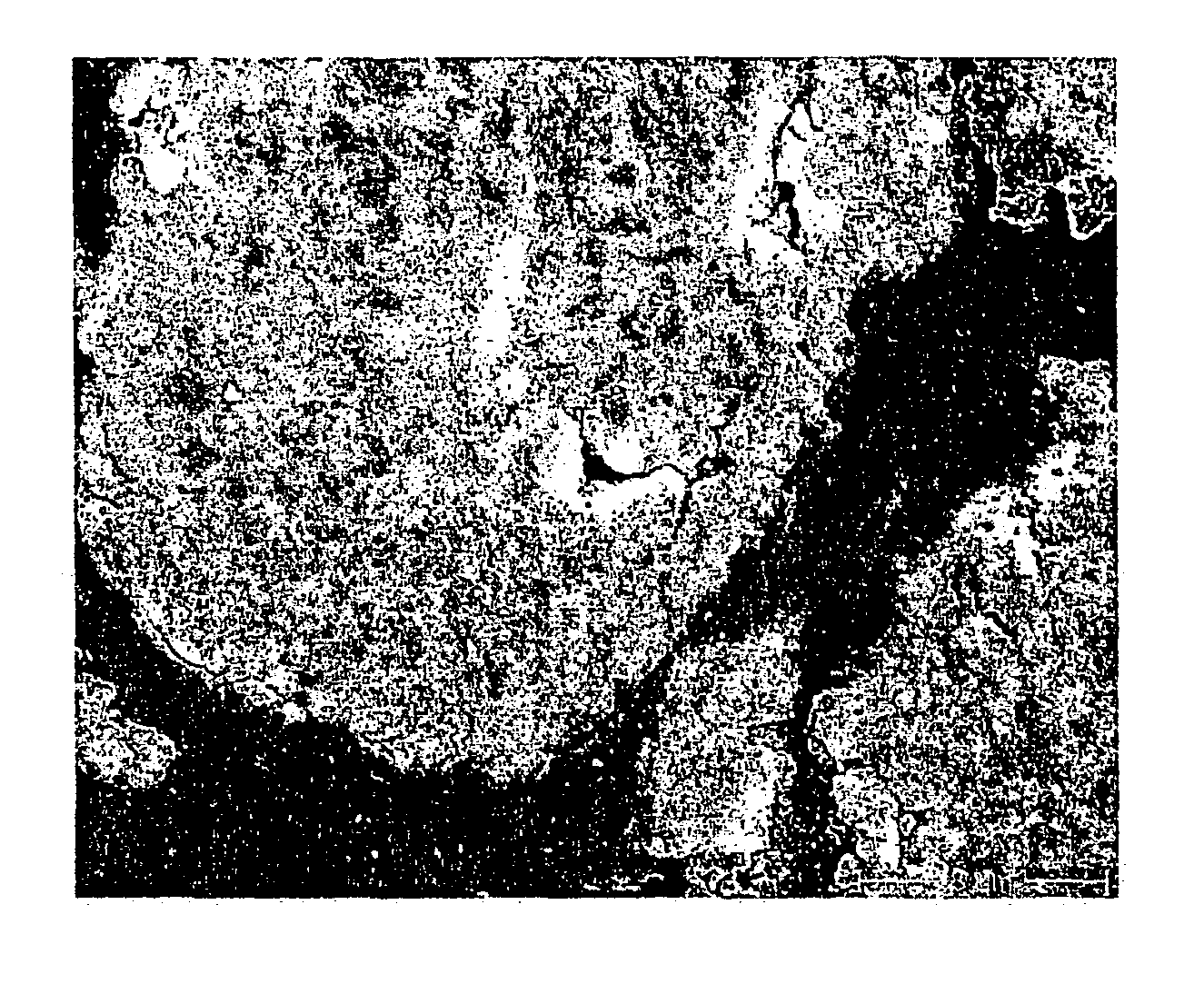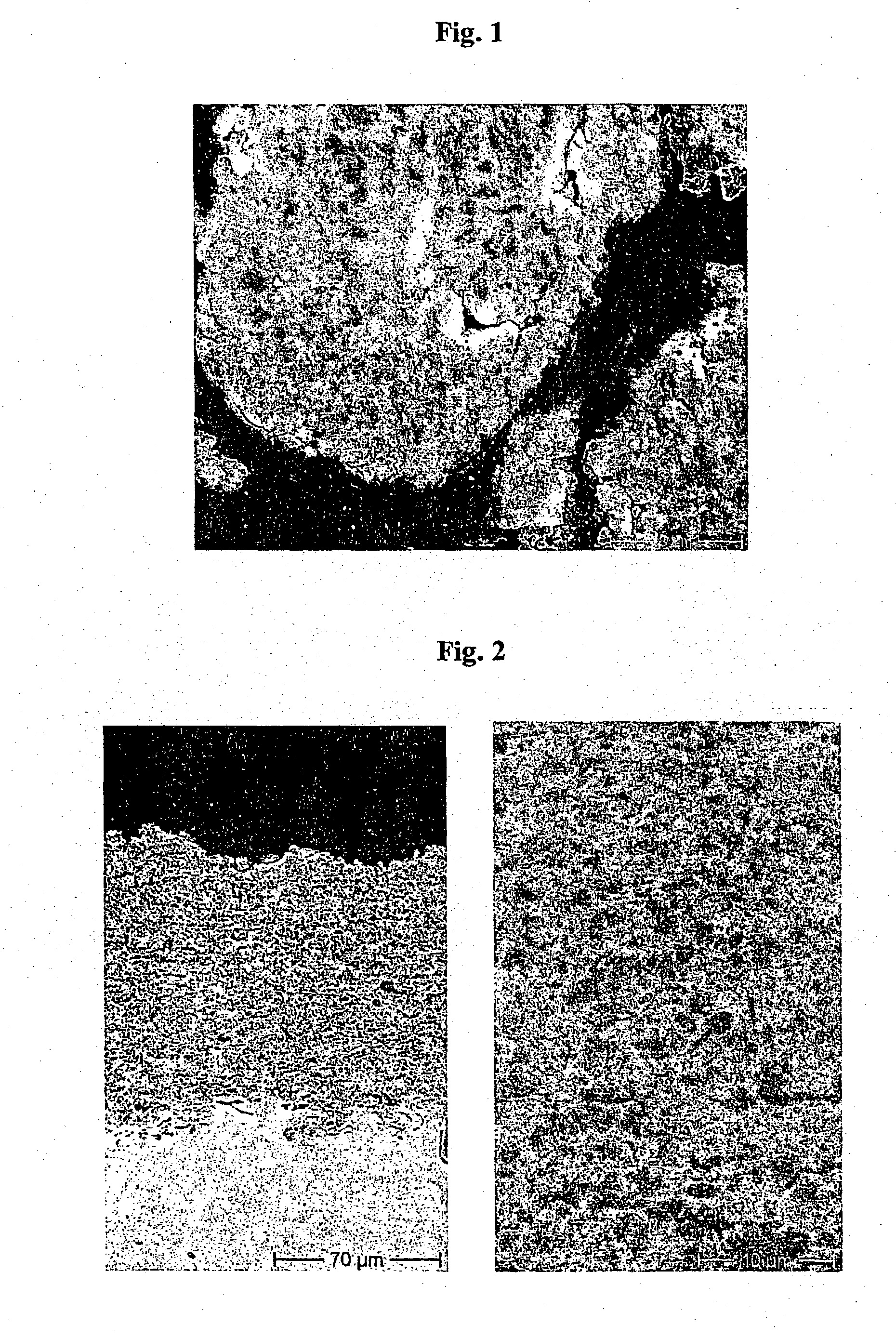Thermally applied coating for piston rings, consisting of mechanically alloyed powders
- Summary
- Abstract
- Description
- Claims
- Application Information
AI Technical Summary
Benefits of technology
Problems solved by technology
Method used
Image
Examples
example 2
[0039] In Example 2 up to 20% by volume of a powdered solid lubricant was alloyed with the powder of Example 1, which is demonstrably present in the coating after processing using HVOF and clearly improves the frictional behavior of the coating on the piston ring.
example 3
[0040] In Example 3, additional metallic elements such as Mo were added by alloying to the matrix of Example 1, in order to improve the tribological properties of the piston ring coating. The Mo powder is only slightly finely milled in the milling process due to its high viscosity; however, it occurs in the powder and in the coating as a uniformly distributed, excellently imbedded phase. The burn trace behavior of the piston ring coating was demonstrably improved in this way.
example 4
[0041] In Example 4, 50% by volume of two different ceramic phases (aluminum oxide, zirconium oxide) were mixed into the powder of Example 1. The ceramics were added at different points in time to the milling process, whereby the various ceramic phases have different fractions in the HVOF coating. Using this procedure, the matrix hardness can be specifically controlled by the one ceramic without the tribologically required hard phase of the other ceramic being negatively influenced. Thereby the abrasive resistance of the piston ring coating can be clearly improved.
PUM
| Property | Measurement | Unit |
|---|---|---|
| Percent by mass | aaaaa | aaaaa |
| Percent by mass | aaaaa | aaaaa |
| Percent by mass | aaaaa | aaaaa |
Abstract
Description
Claims
Application Information
 Login to View More
Login to View More - R&D
- Intellectual Property
- Life Sciences
- Materials
- Tech Scout
- Unparalleled Data Quality
- Higher Quality Content
- 60% Fewer Hallucinations
Browse by: Latest US Patents, China's latest patents, Technical Efficacy Thesaurus, Application Domain, Technology Topic, Popular Technical Reports.
© 2025 PatSnap. All rights reserved.Legal|Privacy policy|Modern Slavery Act Transparency Statement|Sitemap|About US| Contact US: help@patsnap.com


